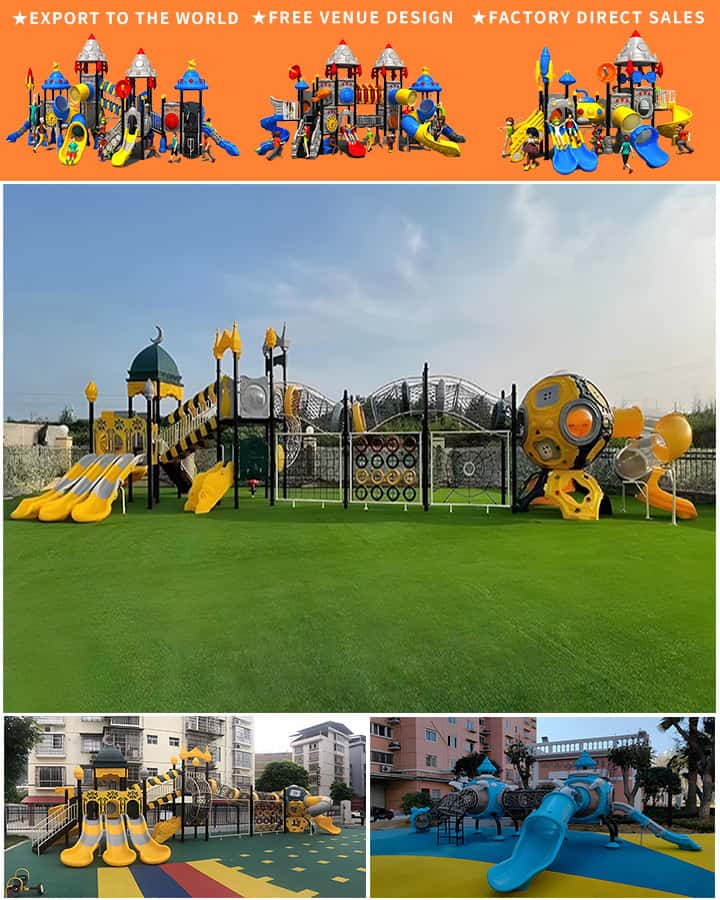In recent years, the landscape of playground equipment for kids has undergone a remarkable transformation. Gone are the days when swings and slides were the crown jewels of playtime; today’s playgrounds are vibrant hubs of innovation and fun, catering to children’s boundless imaginations and diverse physical abilities. From interactive installations to eco-friendly designs, here are some of the exciting new trends revolutionizing play spaces for our little ones.
1. Inclusive Play Equipment
One of the most significant shifts in modern playground design is the move towards inclusivity. Equipment that caters to children of all abilities ensures that everyone can join in the fun, fostering a sense of community and shared enjoyment. Features like wheelchair-accessible carousels, sensory play areas, and adjustable-height swings are becoming increasingly common, making playtime accessible and enjoyable for every child.
2. Interactive and Technological Integration
Playgrounds are no longer just about climbing and sliding; they are now immersive experiences that blend physical and digital play. Interactive elements such as touch-sensitive games, augmented reality (AR) features, and musical instruments have been incorporated into playground designs. These technological advancements not only make play more engaging but also promote learning and development through interactive exploration.
3. Nature-Inspired Playgrounds

In an age where screens dominate much of our time, nature-inspired playgrounds offer a refreshing change of pace. These play spaces integrate natural elements such as trees, water features, rocks, and plants, allowing children to interact with their environment in meaningful ways. Natural playgrounds encourage creativity, physical activity, and environmental stewardship, providing a holistic play experience.
4. Sustainable Design and Eco-Friendly Materials
Sustainability is a growing concern globally, and it extends to playground equipment as well. Modern play structures are increasingly made from recycled materials or sustainably sourced wood, reducing the environmental footprint. Moreover, solar-powered lighting and waterless landscaping are becoming popular choices that contribute to creating greener play spaces.
5. Customizable and Modular Play Equipment
Flexibility is key in contemporary playground design. Modular play systems allow for customization based on the available space, budget, and specific needs of the community. These systems can be adjusted or expanded over time, ensuring that they grow with the changing demands of users. This adaptability makes it easier for schools and parks to provide dynamic and ever-evolving play environments.
6. Educational Playgrounds
Playgrounds are not just for physical activity; they are also valuable educational tools. Many modern playgrounds incorporate elements designed to stimulate cognitive development and learning. Puzzle panels, alphabet and number games, and themed play zones (like miniature towns or science labs) engage children’s minds while they play, turning ordinary fun into enriching experiences.
7. Safety First
While the focus is on innovative and exciting new trends, safety remains a top priority. Modern playground equipment is designed with rigorous safety standards in mind, featuring soft landing surfaces, rounded edges, and non-toxic materials. Regular inspections and maintenance ensure that these spaces remain safe havens for children to explore and enjoy without risk.
Conclusion
The evolution of playground equipment for kids reflects a broader understanding of the importance of play in childhood development. By integrating inclusivity, technology, sustainability, and education, modern playgrounds offer more than just entertainment; they provide essential tools for physical health, social interaction, and cognitive growth. As we continue to innovate and improve these spaces, the future promises even more exciting opportunities for kids to learn, play, and thrive.




